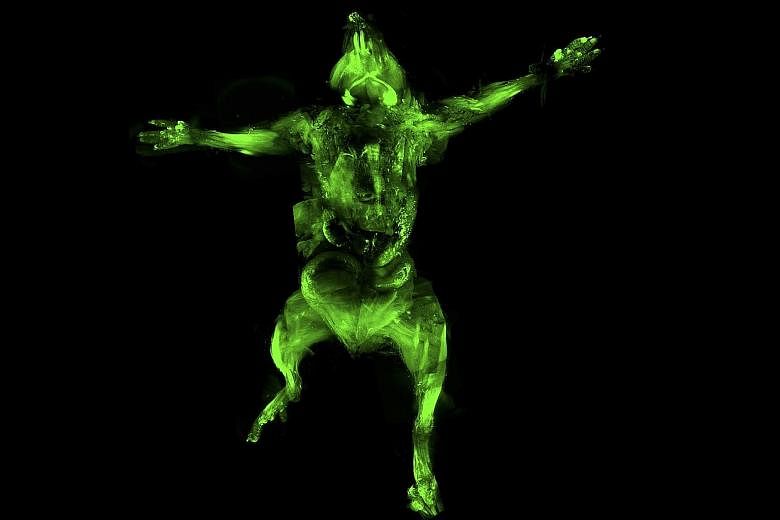NEW YORK • Neuroscientists have developed a way to turn an entire mouse, including its muscles and internal organs, transparent while illuminating the nerve paths that run throughout its body.
The process, called uDisco, provides an alternative way for researchers to study an organism's nervous system without having to slice into sections of its organs or tissues. It allows researchers to use a microscope to trace neurons from the rodent's brain and spinal cord all the way to its fingers and toes.
The technique has been conducted only in mice and rats, but scientists think it could one day map the human brain. They say it could be particularly useful for studying mental disorders such as Alzheimer's disease and schizophrenia.
"When I saw images on the microscope that my students were obtaining, I was like 'Wow, this is mind-blowing,'" said Dr Ali Erturk, a neuroscientist at Ludwig Maximilians University of Munich in Germany and an author of a paper published on Monday in the journal Nature Methods.
He and his colleagues study neurodegenerative disorders, particularly diseases that occur from traumatic brain injuries. Researchers often examine thin slices of brain tissue under a microscope.
"That is not a good way to study neurons because if you slice the brain, you slice the network," he said. "The best way to look at it is to look at the entire organism."
To do this, Dr Erturk and his team developed a two-step process that renders a rodent transparent while keeping its internal organs structurally sound. The mice used were dead and tagged with a special fluorescent protein to make specific parts of their anatomy glow.
First, they dumped the mouse in alcohol to dehydrate it. Then they soaked the mouse in an organic solvent that dissolves its fats like a dishwashing detergent. They simultaneously pumped the liquids through its blood vessels to douse its insides as well. In about four days, the mouse becomes transparent.
Another effect of uDisco is that it shrinks the mouse to half or a third of its size - small and flexible enough to fit under a microscope.
Professor Matthias Tschop, research director of the Diabetes Centre at Helmholtz Zentrum Munchen who researches how the nervous system interacts with organs to control metabolism, praised the technique.
NEW YORK TIMES

